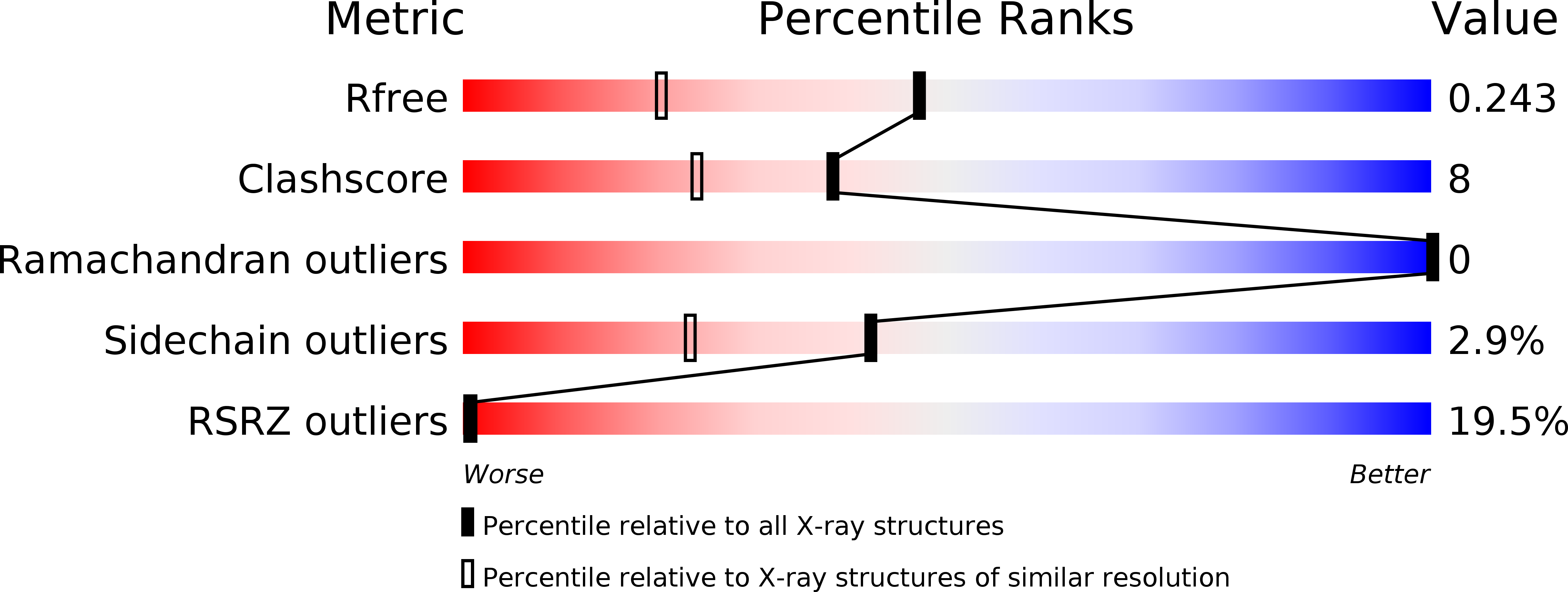A strategic protein in cytochrome c maturation: three-dimensional structure of CcmH and binding to apocytochrome c
Di Matteo, A., Gianni, S., Schinina, M.E., Giorgi, A., Altieri, F., Calosci, N., Brunori, M., Travaglini-Allocatelli, C.(2007) J Biological Chem 282: 27012-27019
- PubMed: 17623665
- DOI: https://doi.org/10.1074/jbc.M702702200
- Primary Citation of Related Structures:
2HL7 - PubMed Abstract:
CcmH (cytochromes c maturation protein H) is an essential component of the assembly line necessary for the maturation of c-type cytochromes in the periplasm of Gram-negative bacteria. The protein is a membrane-anchored thiol-oxidoreductase that has been hypothesized to be involved in the recognition and reduction of apocytochrome c, a prerequisite for covalent heme attachment. Here, we present the 1.7A crystal structure of the soluble periplasmic domain of CcmH from the opportunistic pathogen Pseudomonas aeruginosa (Pa-CcmH*). The protein contains a three-helix bundle, i.e. a fold that is different from that of all other thiol-oxidoreductases reported so far. The catalytic Cys residues of the conserved LRCXXC motif (Cys(25) and Cys(28)), located in a long loop connecting the first two helices, form a disulfide bond in the oxidized enzyme. We have determined the pK(a) values of these 2 Cys residues of Pa-CcmH* (both >8) and propose a possible mechanistic role for a conserved Ser(36) and a water molecule in the active site. The interaction between Pa-CcmH* and Pa-apocyt c(551) (where cyt c(551) represents cytochrome c(551)) was characterized in vitro following the binding kinetics by stopped-flow using a Trp-containing fluorescent variant of Pa-CcmH* and a dansylated peptide, mimicking the apocytochrome c(551) heme binding motif. The kinetic results show that the protein has a moderate affinity to its apocyt substrate, consistent with the role of Pa-CcmH as an intermediate component of the assembly line for c-type cytochrome biogenesis.
Organizational Affiliation:
Dipartimento di Scienze Biochimiche and Istituto di Biologia e Patologia Molecolari del Consiglio Nazionale delle Ricerche (CNR), La Sapienza, Università di Roma, Piazzale A. Moro 5, 00185 Roma Italy.



















